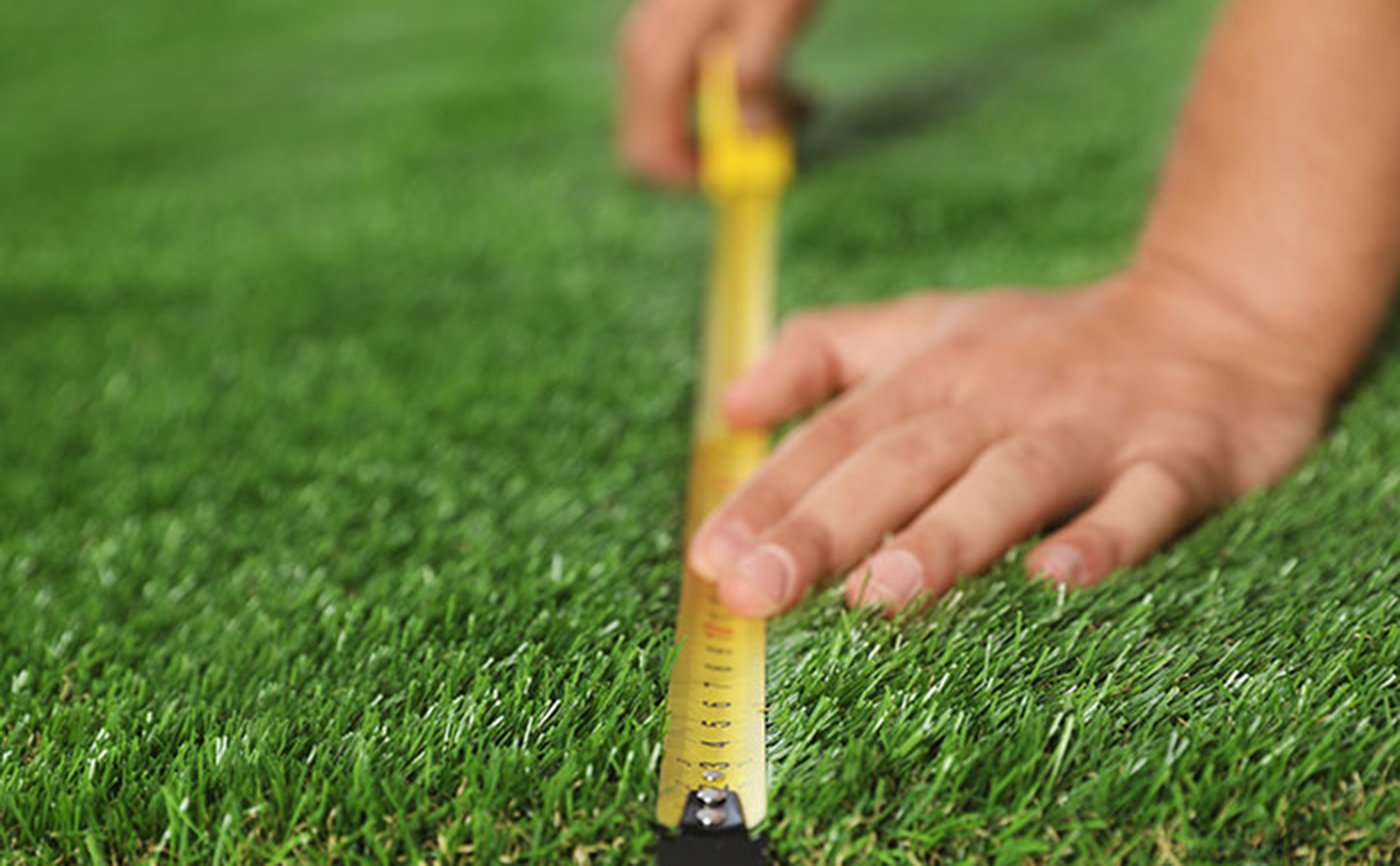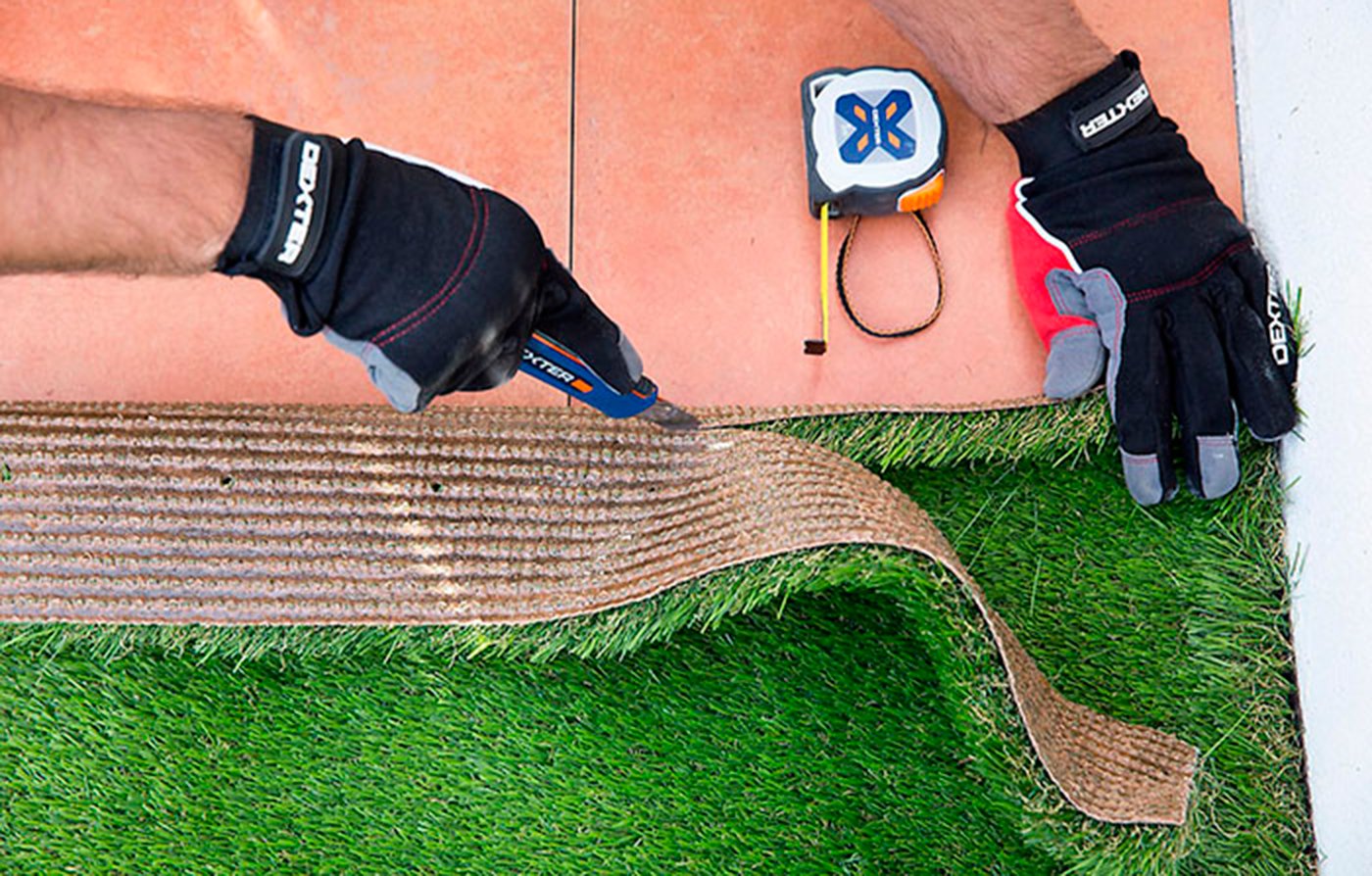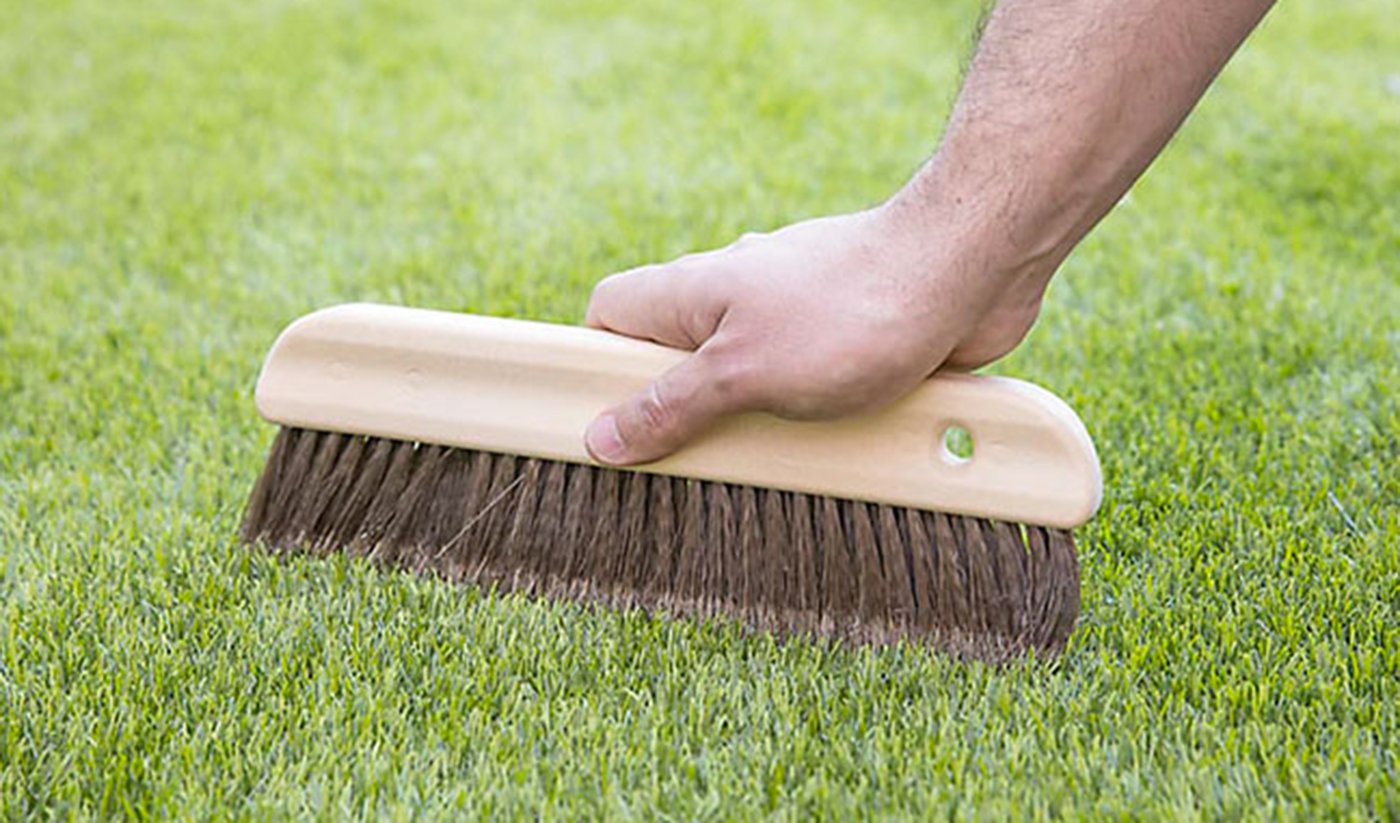Below we will tell you how to install artificial grass on the terrace, the best way to give a differentiating touch to your private outdoor space without the complications of a garden or natural grass. And it is all advantages, since it does not require work, its installation is very simple, it barely needs maintenance and no need to water it. What's more, if you choose a quality artificial grass you will hardly notice any differences with natural grass in both texture and feel as in appearance. Don't miss them all the best tricks on how to install your own artificial grass and thus get a terrace as much as possible cozy possible.
How to install artificial grass on a terrace
Before we move on to the step-by-step tutorial on how to install artificial grass, let's see what type of artificial grass It is ideal to install on your terrace. And there are types of artificial grass of all kinds, from different textures and materials to various heights, through color or drainage capacity, among other characteristics. From Tricks.com We recommend investing your money well and opting for a high-end model that offers the best possible result; Thus, you will get a feel and look similar to that of the natural grass with little maintenance. When you have your type of artificial grass ready, it's time to install it: let's get to it!
How to install artificial grass: step by step
Index of contents
- Previous steps
- Prepare the soil
- Measure and cut
- How to lay the grass
- How to join grass strips
- Final touches
Previous steps
Installing sheets of artificial grass is a fairly simple task, so you can do it yourself; although if you have the help from another person better than better, especially if the grass coils are large in size.
We recommend installing artificial grass on tile or concrete pavement, since installation on earth or sand is more laborious and complicated. For its installation you will need, in addition to the grass strips themselves (which usually come rolled), joining bands or adhesive glue, silica sand, a sharp cutter, one meter, a serrated plastic spatula, a brush and a rake.
Although the only mandatory tools are the cutter and the meter to measure and cut the strips to the desired size and shape, we recommend the rest of the utensils to carry out the installation in the best possible way.
Prepare the soil
Before starting to treat the strips or sheets of artificial grass, it is advisable prepare the soil well on which it will be installed. Thus, first check that the ground has a certain slope towards a drain so that rainwater drains properly. Then clean the floor with a hose or pressure washer; finally, let the floor dry.
Measure and cut
Calculate the distances you need to cover with the different strips of artificial grass according to the necessary size. If it is a small space (30 square meters or less) you can opt for a 1 or 2 meter wide roll. Spread out the artificial grass tarp and mark the cutting lines; think about leave about 10 centimeters extra around the perimeter so you can adjust the edges when you cut the excess.

How to lay the grass
As you have the different grass patterns, spread them on the ground and couple them together; Make sure the grass fibers are oriented in the same direction for a more regular and homogeneous appearance, so that differences between different strips of grass are not noticeable.
How to join grass strips
Once you have placed the different strips of grass on the ground and have made sure that they fit well with each other, it is time to join them together. To glue them together, lift about 20 centimeters from both edges to expose the base of the strips. Now place the binding band underneath from both edges and apply glue with a plastic spatula; You can use a two-component polyurethane glue.

Put the necessary amount of glue but without overdoing it so that it does not overflow through the joints when you join both edges; Spread the glue well with the notched spatula. Alternatively, you can use self-adhesive joint strips; When you place them under the strips, simply remove the paper that covers the adhesive to stick both strips of artificial grass.
When the glue or self-adhesive is ready, place the grass edges on the bottom band pressing the entire surface so that they remain stuck; Make sure that the joints are not visible, avoiding overlapping one strip on the other. We recommend that you place some weight on the joints during at least 24 hours Let it dry completely and stick well.
Finally, trim the excess edges with the cutter adjusting the limits to the walls or walls of the space to be covered.
Final touches
When at least 24 hours have passed, you can now remove the weights from the joints if you have had to glue several strips. Now you can make the finishing touches to leave your lawn looking its best. For this you can pass a brush against the grain to lift the fibers of artificial grass.

On the other hand, when the grass is already installed, it is advisable apply a layer of silica sand to improve grip on the ground and protect the artificial grass strips from outside weather conditions in order to extend its useful life. Silica sand also helps preserve the shape of artificial grass fibers and prevent them from warping or crushing as easily when stepped on.
Of course, make sure that the artificial grass you have purchased It does not have silica sand already incorporated, since some guys already carry it.
And with these simple steps you will know how to install your own artificial grass in a simple way and without problems or setbacks.

